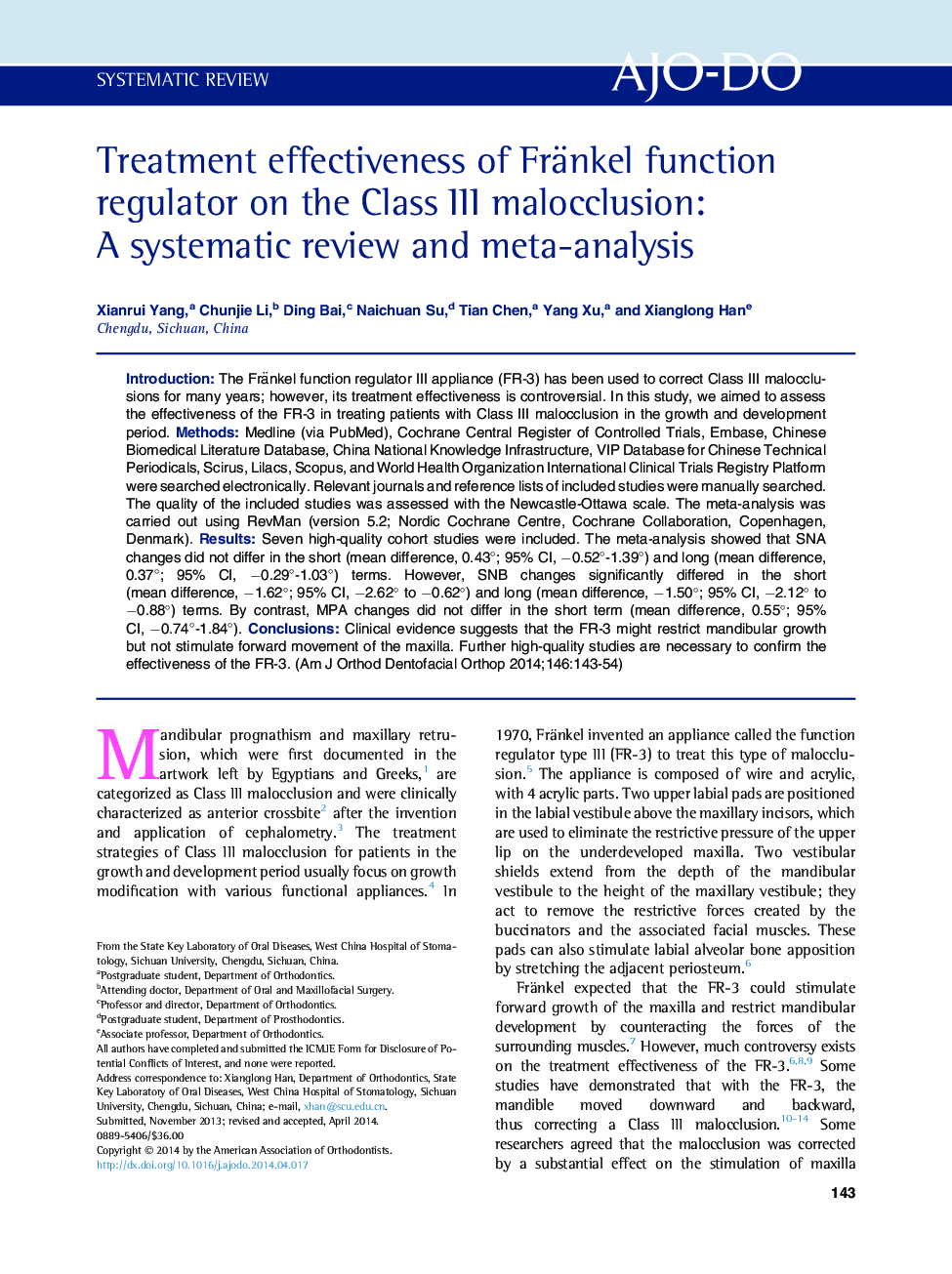| Article ID | Journal | Published Year | Pages | File Type |
|---|---|---|---|---|
| 3116409 | American Journal of Orthodontics and Dentofacial Orthopedics | 2014 | 12 Pages |
IntroductionThe Fränkel function regulator III appliance (FR-3) has been used to correct Class III malocclusions for many years; however, its treatment effectiveness is controversial. In this study, we aimed to assess the effectiveness of the FR-3 in treating patients with Class III malocclusion in the growth and development period.MethodsMedline (via PubMed), Cochrane Central Register of Controlled Trials, Embase, Chinese Biomedical Literature Database, China National Knowledge Infrastructure, VIP Database for Chinese Technical Periodicals, Scirus, Lilacs, Scopus, and World Health Organization International Clinical Trials Registry Platform were searched electronically. Relevant journals and reference lists of included studies were manually searched. The quality of the included studies was assessed with the Newcastle-Ottawa scale. The meta-analysis was carried out using RevMan (version 5.2; Nordic Cochrane Centre, Cochrane Collaboration, Copenhagen, Denmark).ResultsSeven high-quality cohort studies were included. The meta-analysis showed that SNA changes did not differ in the short (mean difference, 0.43°; 95% CI, −0.52°-1.39°) and long (mean difference, 0.37°; 95% CI, −0.29°-1.03°) terms. However, SNB changes significantly differed in the short (mean difference, −1.62°; 95% CI, −2.62° to −0.62°) and long (mean difference, −1.50°; 95% CI, −2.12° to −0.88°) terms. By contrast, MPA changes did not differ in the short term (mean difference, 0.55°; 95% CI, −0.74°-1.84°).ConclusionsClinical evidence suggests that the FR-3 might restrict mandibular growth but not stimulate forward movement of the maxilla. Further high-quality studies are necessary to confirm the effectiveness of the FR-3.
